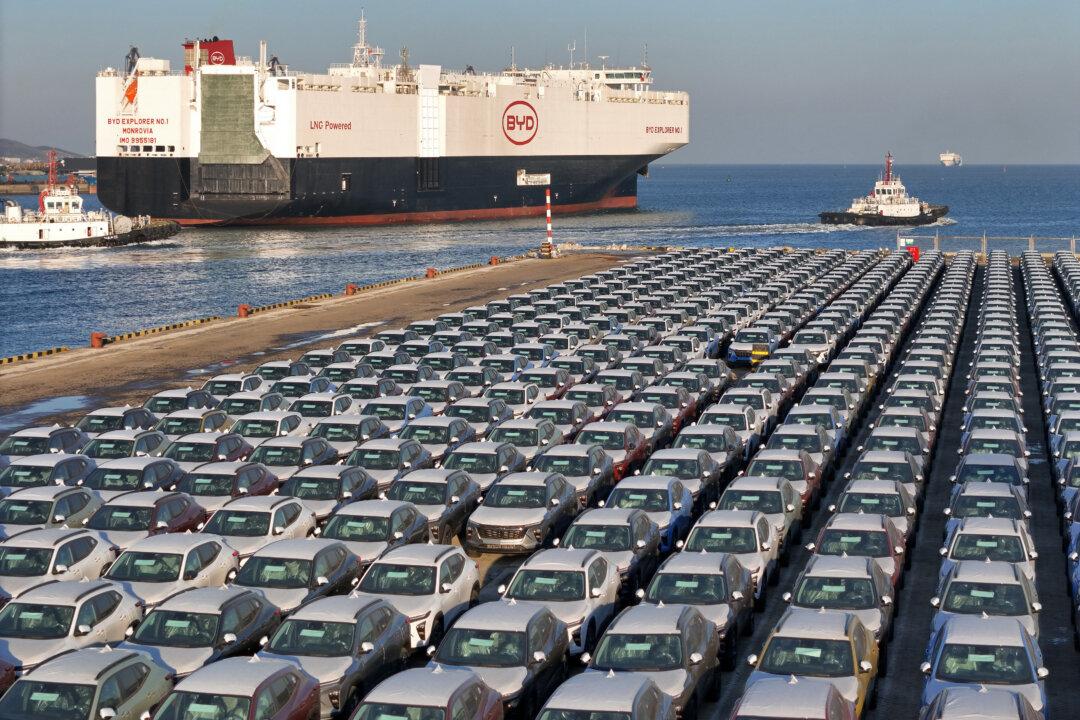The U.S. Navy is conducting a salvage operation of the F-35C fighter jet that crashed in the South China Sea last month, which analysts say is a necessary operation to prevent the advanced technology from falling into the hands of the Chinese regime.
However, a former U.S. Pacific Command official told The Epoch Times that “China is not capable of salvaging the aircraft.”
The United States condemns Beijing’s aggressive behavior in the region and upholds a 2016 international ruling, which rejected the Chinese Communist Party’s (CCP) “nine-dash line” claim to about 85 percent of the South China Sea’s 2.2 million square miles, and stated that Beijing’s territorial claims were inconsistent with the United Nations Convention on the Law of the Sea (UNCLOS).
“Beijing’s claims to offshore resources across most of the South China Sea are completely unlawful, as is its campaign of bullying to control them,” Secretary of State Antony Blinken said in a statement on July 11, 2021.
Carl Schuster, former director of operations at the U.S. Pacific Command’s Joint Intelligence Center in Hawaii, told The Epoch Times on Feb. 1 that the salvage operation would take about 10 to 20 days and if all went well, it would be completed by the end of February.Salvaging such a heavy aircraft from the deep sea is a costly operation. Schuster estimates that it would cost about $10 million to $20 million to take the jet out of the water, and restoring it to operational condition would cost another $20 million or $30 million.
He said that such an operation is not worth undertaking in most cases, “but if you’re salvaging it so that no one else can pull it up and reverse engineer it or copy some of the technology involved or find ways to defeat that technology, then the answer is … yeah ... since it’s a brand-new aircraft and its technologies [are] of interest to hostile powers ... denying them access to that plane is probably purely high in priority,” he said.

Schuster told The Epoch Times that “everything on the crashed F-35C was state-of-the-art technology,” which covers steer, engines, airframe, avionics, data links, and radar.
When asked whether China would salvage the F-35C before the United States does, Schuster said that Beijing would very much like to do so, but concerns over political and technical risks might stop them.
According to Schuster, first, if China blatantly seizes U.S. property, the United States is bound to defend it determinately, and a conflict would be expected to break out between the two sides—so Beijing needs to reconsider the political risks.
Second, China does not have the ability to operate in such deep waters, as the deepest ever recorded by the country was 1,500 to 2,000 feet; meanwhile, the F-35C is now lying at 11,800 feet, he said.
Moreover, the ocean bottom topography is complex. Schuster said: “The ocean pressures down there, very unforgiving. Plus, you don’t know the currents … the trouble with the South China Sea is the bottom is not consistent, because of the volcanic activity, the bottom contour changes every year.”
But the United States will have no problem recovering the F-35C, he added. “We recovered [an] aircraft from 15,000 feet, so an aircraft [that’s] 11,000 feet [is] similarly doable.”
Although Schuster said the Chinese are not capable of recovering the crashed F-35C, they will nevertheless attempt to explore the jet.
“I think that they will monitor it with aircraft at first, and they might put a coast guard vessel or one of their ... people’s armed forces, maritime militia craft ... within visual range to monitor it. ... I would not be surprised if they are trying to position one of their deep-diving submersibles into the area to survey the crash,” he said.
Schuster believes that China may have taken water samples around the crashed plane and used a wide range of photographic and spectroscopic systems to probe it.
If “you take every type of imagery you can, so you can build a computer model … the water samples from around the crash tells you something of the minerals that are in the aircraft.”
In addition, to enter the interior of the aircraft, “it would require a deep-diving vessel that’s very small … also got to be able to handle tremendous amounts of pressure,” Schuster said.

Technology Theft
A variety of U.S. military weapons have been targeted for theft by the CCP in recent years.Schuster believes that the CCP has already obtained 60 percent of the F-35C’s drawings through espionage in the past. If China salvages the crashed aircraft, it would have obtained another 30 percent to 40 percent of the drawings, he said.
The United States does not want “a hostile country” to have access to these advanced technologies “because they [the CCP] can then learn not only how to defeat it, but they [the CCP] can use it against you,” Schuster said.




